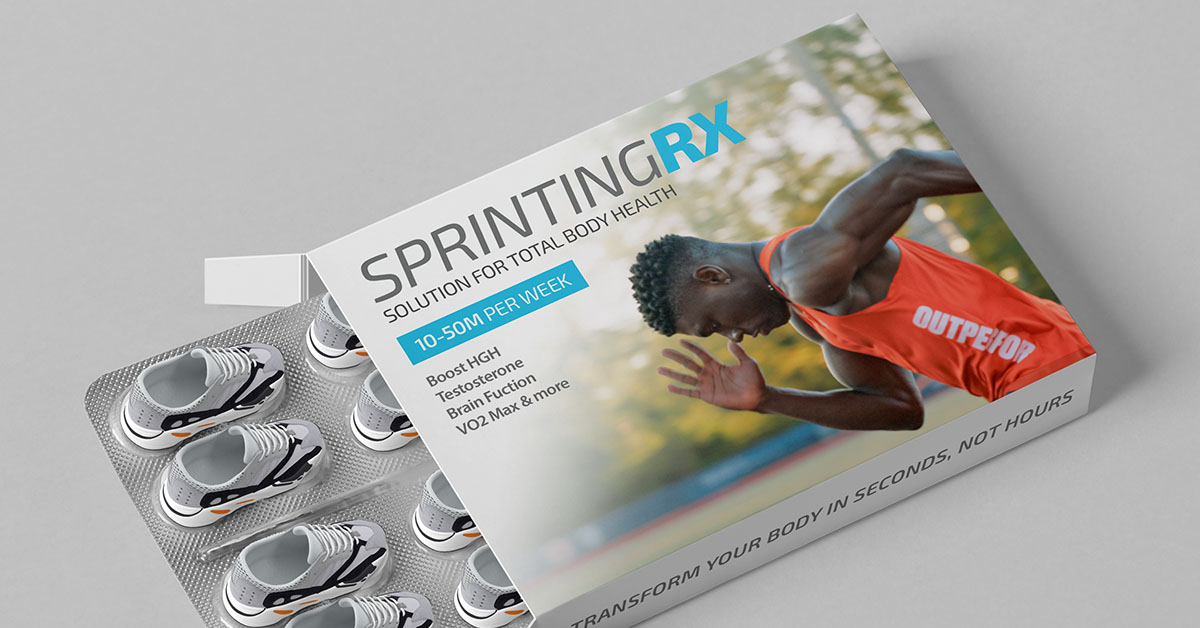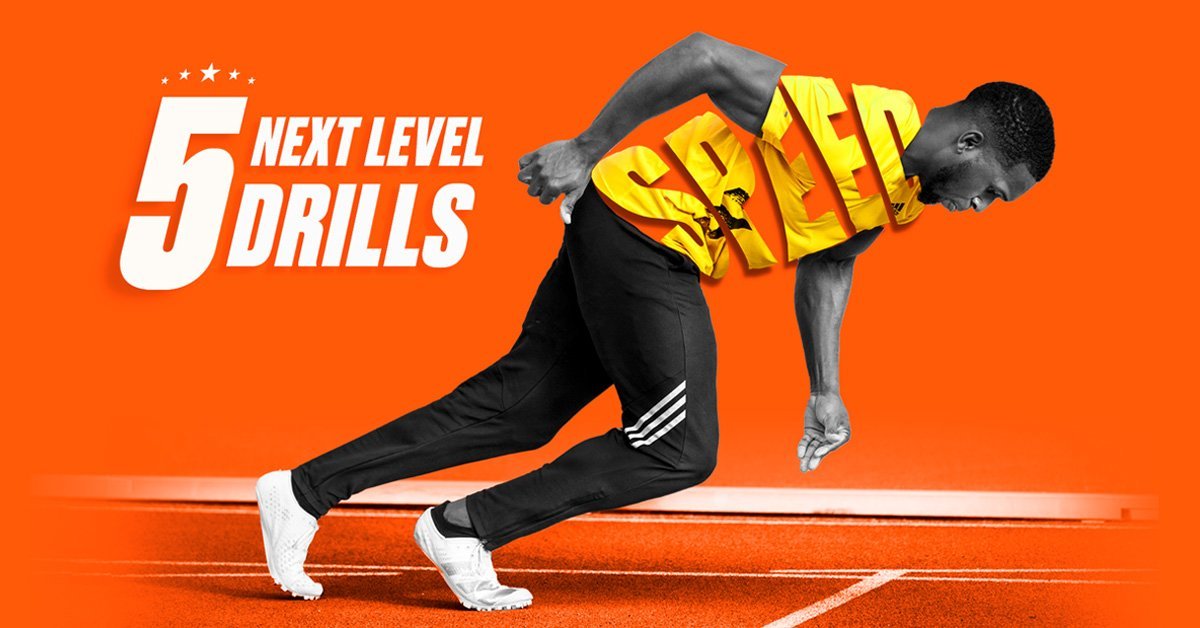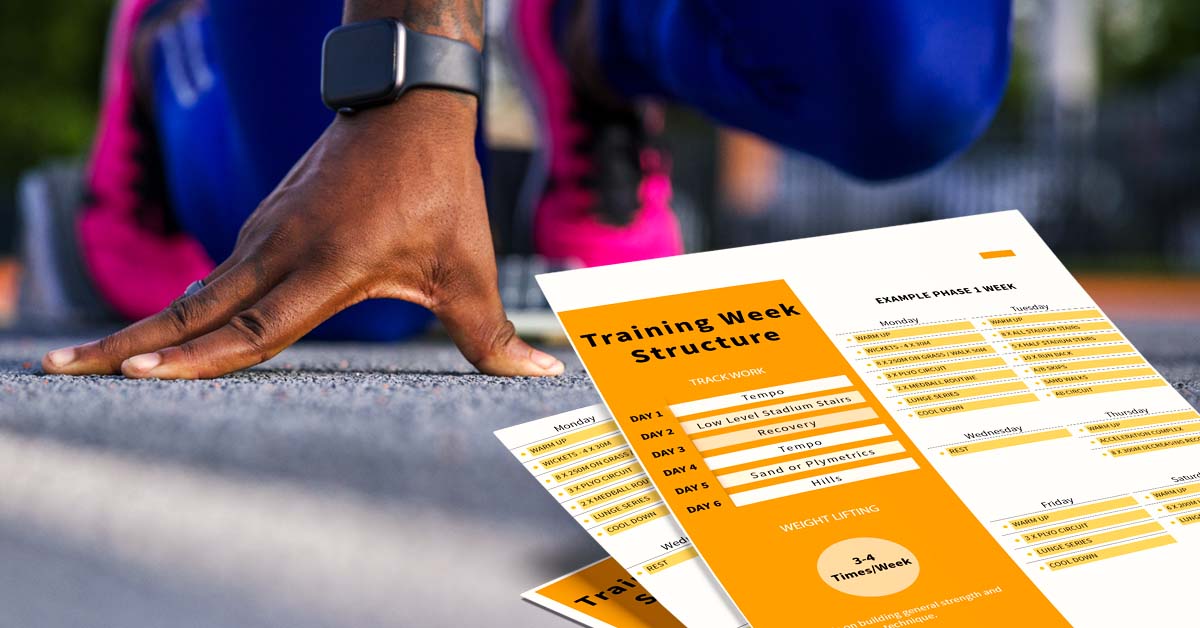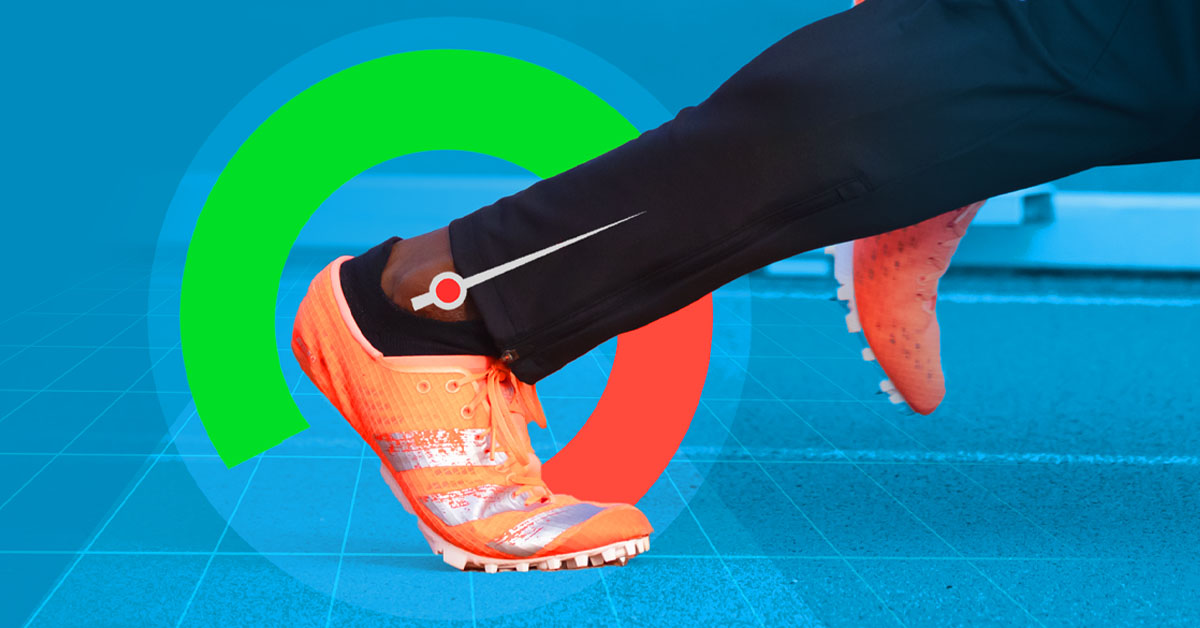
Scientists have uncovered a running loophole—one so powerful it works like a wonder drug, upgrading your body in ways most workouts can’t touch.
It builds muscle, torches fat, skyrockets natural testosterone, boosts stamina, extends lifespan, elevates mood, and sculpts glutes that perform as good as they look.
And it doesn’t take hours. It takes seconds.
It turns out that the biggest benefits of running don’t come from distance—they come from speed.
So what’s the catch?
Sprint training is hard. Excruciatingly so. It demands pushing your body to the absolute edge, 90 to 100 percent of your maximum effort. The kind of intensity most people instinctively avoid.
Yet our bodies are wired precisely for these short, ferocious bursts of speed.
Evolution didn’t design us soley for long, steady jogs across the savanna. It built us for sudden chases, narrow escapes, and brief flashes of all-out effort that meant life or death.
Our bodies crave the intensity. When we embrace our innate desire for speed, the rewards are nothing short of extraordinary.
Sprinting isn’t just a workout—it’s an evolutionary hack. A shortcut buried deep within your biology, capable of transforming your body in seconds.
In this article, we’ll explore the compelling reasons why sprinting deserves a central role in your fitness journey and why sprinters are ahead of the game.
What is Sprint Training?
Sprint training isn’t simply running fast, it’s a structured, high-intensity workout that uses short, explosive bursts of speed at 90-100% effort, followed by controlled recovery.
A lot of people think they’re sprinting when they’re really just running faster in their normal form.
That's not sprinting-it's strides.
True sprint training pushes you to maximum effort, forcing your body to recruit fast-twitch muscle fibers far more intensely than you ever would on a regular run. It also demands a different technique, one that puts your body in the optimal position to apply maximum force into the ground.
It’s one of the most powerful ways to build muscle, burn fat, improve endurance, and optimize hormone levels in minimal time.
The Performance Benefits of Sprint Training
We’ll start with the benefits sprinting brings to your athletic performance (or your ability to escape a hungry lion):
1. You'll be faster - duh
Multiple studies, unsurprisingly show that sprint training significantly improves top-end speed. What is surprising is that it also boosts aerobic speed. Sprinting enhances maximal aerobic speed and overall endurance performance, even in untrained individuals, making it one of the most effective ways to improve both sprint speed and aerobic capacity.
2. You'll be stronger
Studies have shown that adding sprinting into your training routine can significantly improve your power output, particularly by increasing the development of fast-twitch muscle fibers (more on this later).
In fact, just six sessions of sprint training increased peak power by 2.4% and mean power by 2.8%
3. You'll run longer
Sprinting doesn't just make you faster, it boosts your endurance too. By improving the body's lactate threshold, you can sustain higher intensities for longer periods before fatigue sets in.
The research linked above showed that sprint-trained athletes can sustain high-intensity efforts up to 42% longer before exhaustion compared to traditional endurance training. Sprinting rewires your endurance capacity, building both cardiovascular and muscular stamina simultaneously.
Now, onto the not-so-obvious benefits of sprinting.
Burn Fat Faster (and Smarter)
Sprinting's fat-burning prowess is unmatched.
A 2024 meta-analysis revealed sprint interval training (SIT) slashed body fat by 39% more than high-intensity interval training (HIIT) despite a whopping 61% less time spent exercising.
Compared to moderate-intensity continuous training, sprint training obliterates body fat at an even higher rate; 90% greater fat reduction in 70% less exercise time.
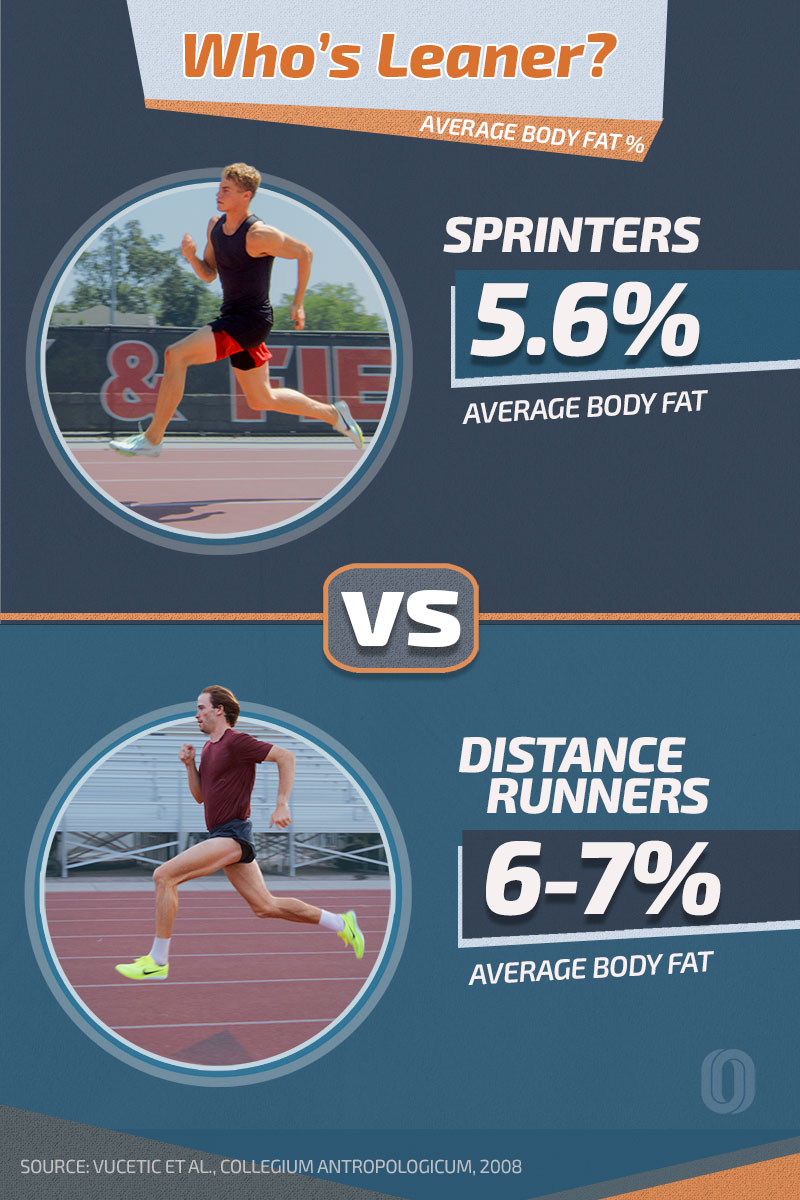
But wait! Endurance athletes look like they have less body fat than sprinters 👀
Interestingly, although distance runners often appear leaner, research shows elite sprinters actually have lower overall body fat percentages.
Sprint interval training targets body fat at the cellular level, optimizing hormonal responses and mitochondrial efficiency, providing powerful metabolic shifts that endurance workouts simply can't match.
Boost HGH, Testosterone, and Insulin Sensitivity—Naturally
Sprint training naturally increases both human growth hormone (HGH) and testosterone.
HGH’s primary role in the human body is cell regeneration, but it can also increase caloric burn and switch your body’s fuel source from carbohydrates to fat.
Testosterone aids metabolic health, contributes to muscle gain, and supports cognition, among other benefits.
HGH and testosterone levels decline as we age; sprinting is one way we can stave off this decline.
Beyond human growth hormone (HGH) and testosterone increases, sprinting also improves adrenal function. Sprint training strategically activates the body’s fight-or-flight response, boosting adrenaline and cortisol temporarily.
This controlled hormonal spike trains your body to become more adept at quickly regulating stress hormones, leading to reduced chronic stress and improved mood stability in daily life.
Additionally, enhanced insulin sensitivity—boosted up to 53% through sprinting means your body more effectively shuttles nutrients into muscles, boosting performance and overall metabolic health.

Upgrade Your Cellular Engine for Maximum Performance
Sprinting improves mitochondrial biogenesis.
If you just thought, “What the fartlek is mitochondrial biogenesis?”—same.
Mitochondria are the microscopic engines in your cells. They convert food and body fat into energy, among numerous other functions.
Mitochondrial biogenesis is the growth and division of pre-existing mitochondria, so bigger, more powerful engines.
Sprinting creates a high-energy demand environment, triggering your body’s survival response: making more mitochondria.
More mitochondria mean higher energy production, better oxygen utilization, and reduced fatigue during intense efforts.
Studies consistently demonstrate that sprint training is one of the fastest ways to increase mitochondrial density, not just in muscles but also in heart tissue.
The result? Greater cardiovascular efficiency, elevated energy levels throughout the day, and noticeable improvements in both physical and cognitive stamina.
Essentially, sprinting trains your cells to up their game.

Increase Your VO2 Max and Endurance
You know that feeling you get when you’re running and your lungs are on fire, your chest tightens, and your legs feel like they’re wading through wet cement? You’re gasping for air, your mind begging you to stop, and you wonder—why is this so hard?
How do Olympians make it look SO easy?
The secret lies in your VO2 max.
What is VO2 Max?
VO2 max is the maximum amount of oxygen your body can use during intense exercise. The more oxygen your body can process, the easier running (and any other physically demanding activity) feels.
A recent meta-analysis found that just three weeks of sprint interval training can increase VO2 max by 4% to 10%—a remarkable improvement in such a short time.
What Does a Higher VO2 Max Do for You?
When your VO2 max climbs, your heart and lungs work more efficiently, delivering oxygen to working muscles with greater speed and precision.
That means you’ll recover faster between efforts, sustain faster paces for longer, and best of all that burning, gasping-for-air feeling?
It happens later, and less intensely.
There’s a popular quote in endurance sports:
"It never gets easier, you just get faster."
That’s not entirely true. Sprint training rewires your body to use oxygen better, so you do get faster. But it also gets easier, because your body becomes a finely tuned machine, ready to handle the burn.
But a higher VO2 max isn’t just about performance. It’s also a powerful predictor of long-term health.
In fact, one long-term study found that for every improvement in VO2 max, the risk of death from any cause dropped by 21%, even after accounting for factors like blood pressure, cholesterol, and smoking.
In other words: boosting your VO2 max doesn’t just make you faster—it helps you live longer.

Sprint Training Backed by Science
Sprint Training Workouts Backed by Science
So, what kind of sprint training makes the biggest difference? According to research, this simple sprint protocol produced the greatest VO2 max gains:
- 2 to 3 sprint workouts per week
- 8 to 12 sprints per session
- Each sprint lasting 20 to 30 seconds
- Short recovery intervals of less than 3 minutes between sprints
Of course, how you sprint matters just as much as how often. Poor technique can lead to wasted energy, slower times, and a higher risk of injury.
Contrary to popular belief, sprinting isn’t just running faster—it’s a skill.
Before diving into sprint training programs, take the time to learn proper sprint mechanics to maximize your speed and stay injury-free. And we’ve got you covered—check out this article on proper sprinting form to learn how.
Build Bigger Glutes (and a Natural BBL)
Forget plane tickets to Brazil and sleeping on your stomach for six weeks. If you want that sculpted, powerful backside, you should be sprinting.
To be among the fastest humans on the planet, sprinters need to unleash an incredible amount of power in every step. Here’s the key, sprinting doesn’t build the same kind of muscle as regular weight training.
That kind of force doesn’t come from average muscles. It comes from highly specialized ones, packed with fast-twitch muscle fibers.
Fast-twitch fibers are your body’s speed experts. They’re built for explosive power and quick bursts of movement like sprinting, jumping, or anything that demands instant acceleration.
These super fibers aren’t just fast—they’re 10 times faster than your slow-twitch fibers.
They’re also the least trained muscle fibers in most people’s bodies, because you can’t really activate them with slow jogs or endless hip thrusts.
They only show up to the party when you break out the speed (pun intended).
Sprinting doesn’t just recruit these fibers, it breaks them down. And when your body repairs them, it doesn’t just restore them, it builds them back stronger and thicker.
Researchers comparing elite and sub-elite sprinters found that some muscles were dramatically larger in the elites, notably the ones responsible for driving sprinting power:
- Gluteus maximus – 45% larger
- Sartorius (the long muscle running down the thigh) – 47% larger
- Tensor fasciae latae (TFL) – 57% larger
Here’s the crazy part: these elite sprinters weren’t necessarily stronger in a traditional sense. Their advantage wasn’t brute strength, it was how efficiently their muscles fired, how quickly they could contract and relax, and how seamlessly their muscles worked together.
Sprinters develop muscle that’s not only larger, but far more coordinated and explosive.
It’s called neuromuscular coordination, the hidden ingredient that turns raw muscle into breakneck speed.
So yes, sprinting gives you glutes for days, but they’re not just for show. These are power-producing, force-generating, speed-boosting glutes, built by training the exact muscle fibers most people never tap into.
It’s nature’s version of a BBL—no surgery required.
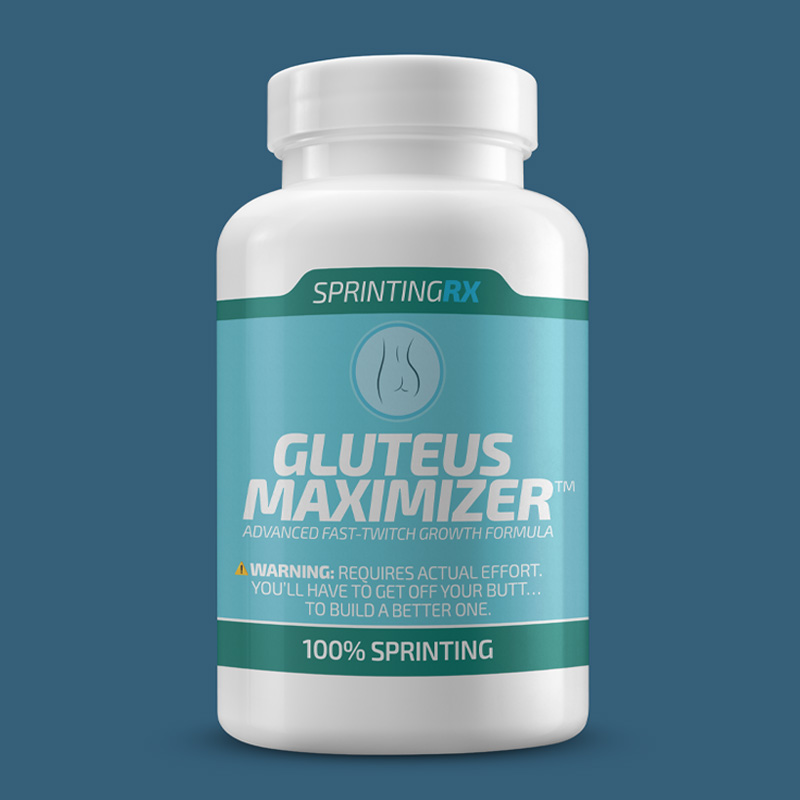
Sharpen Your Mind
Back to that leg-burning, mind-pleading-for-mercy feeling we talked about earlier.
You know what comes next—when you tell your legs and lungs to hold on for just a few more seconds… and they do?
That’s the power of your mind at work. And it turns out, when you push your body at high speed, you push your brain too.
Just like sprinting keeps your muscles from shrinking, it also helps protect your brain from age-related decline.
A recent study using MRI scans found that high-intensity exercises like sprinting prevented brain shrinkage, particularly in the hippocampus, the part of the brain responsible for memory and learning.
And sprinting didn’t just preserve brain volume, it strengthened the connections between different brain regions, something that low- and moderate-intensity workouts failed to do.
Even more impressive? After just six months of sprint training, these benefits were still visible five years later.
So what’s behind these brain-boosting effects? Sprinting increases levels of brain-derived neurotrophic factor (BDNF)—a protein that fuels brain growth, enhances memory, and sharpens cognitive function—while also helping regulate cortisol, the body’s primary stress hormone.
In short: Sprinting doesn’t just make you faster—it makes you smarter, sharper, and more resilient for years to come.
Better Mental Health and Stress Resilience
You’ve heard of a runner’s high? Sprinting takes it to a whole new level. It’s not just your lungs and legs working overtime, your brain gets in on the action too.
A recent study on young adults found that sprinting delivers mental health benefits on par with, or even greater than, traditional cardio. And the numbers don’t lie:
- Depression and anxiety? Down 24.3%.
- Stress levels? Lowered by 26.6%.
- Overall happiness? Boosted by 20.1%.
But the benefits don’t stop there. Sprinting also enhances brain function:
- Reaction time improves by 3.3%—because thinking fast starts with moving fast.
- BDNF (Brain-Derived Neurotrophic Factor) levels jump by 15%—in just 20 minutes of sprint training.
BDNF is like an upgrade for your mental hardware. It strengthens connections, sharpens memory, and enhances cognitive function.
Elite sprinters take this to another level. In a study on Brazilian sprinters, researchers found a direct link between high-intensity sprint training and elevated BDNF levels, a discovery that underscores a simple but powerful truth: moving faster makes your brain work better.
The more intense the effort, the bigger the reward. It’s a system that rewards urgency.
Sprinting doesn’t just make you quicker on the track. It makes you quicker—period.
Now Get Out of Here—Fast!
If you’ve read this far, you’re probably ready to sprint out of your chair.
And for good reason, sprinting is magic.
With just seconds of effort, you tap into a biological cheat code designed to make you stronger, faster, and more resilient.
Not sure where to start? Get instant access to Speed Primer—our free sprinting course taught by two Olympic sprint coaches. Learn proper sprint mechanics, improve your speed, and reduce injury risk—all for free.


